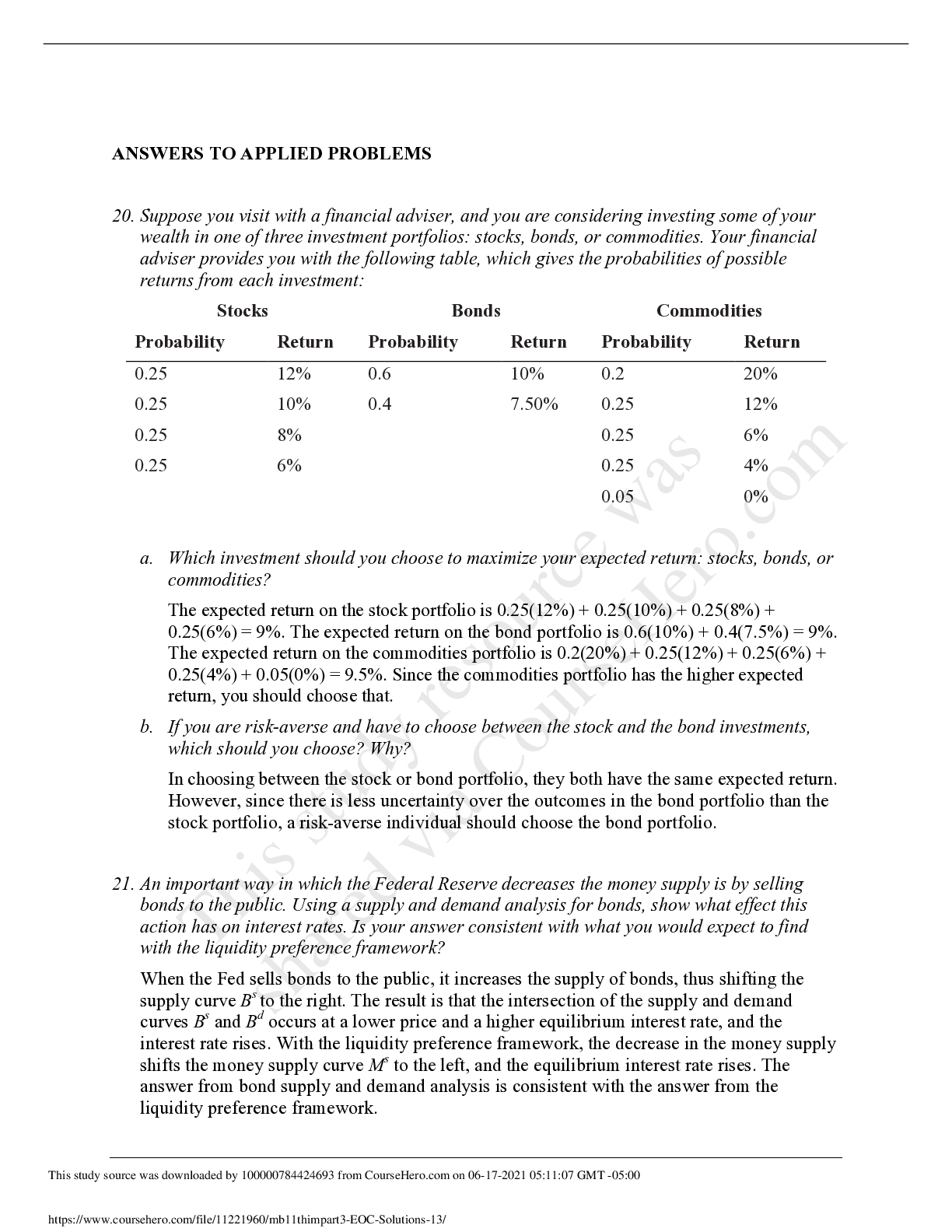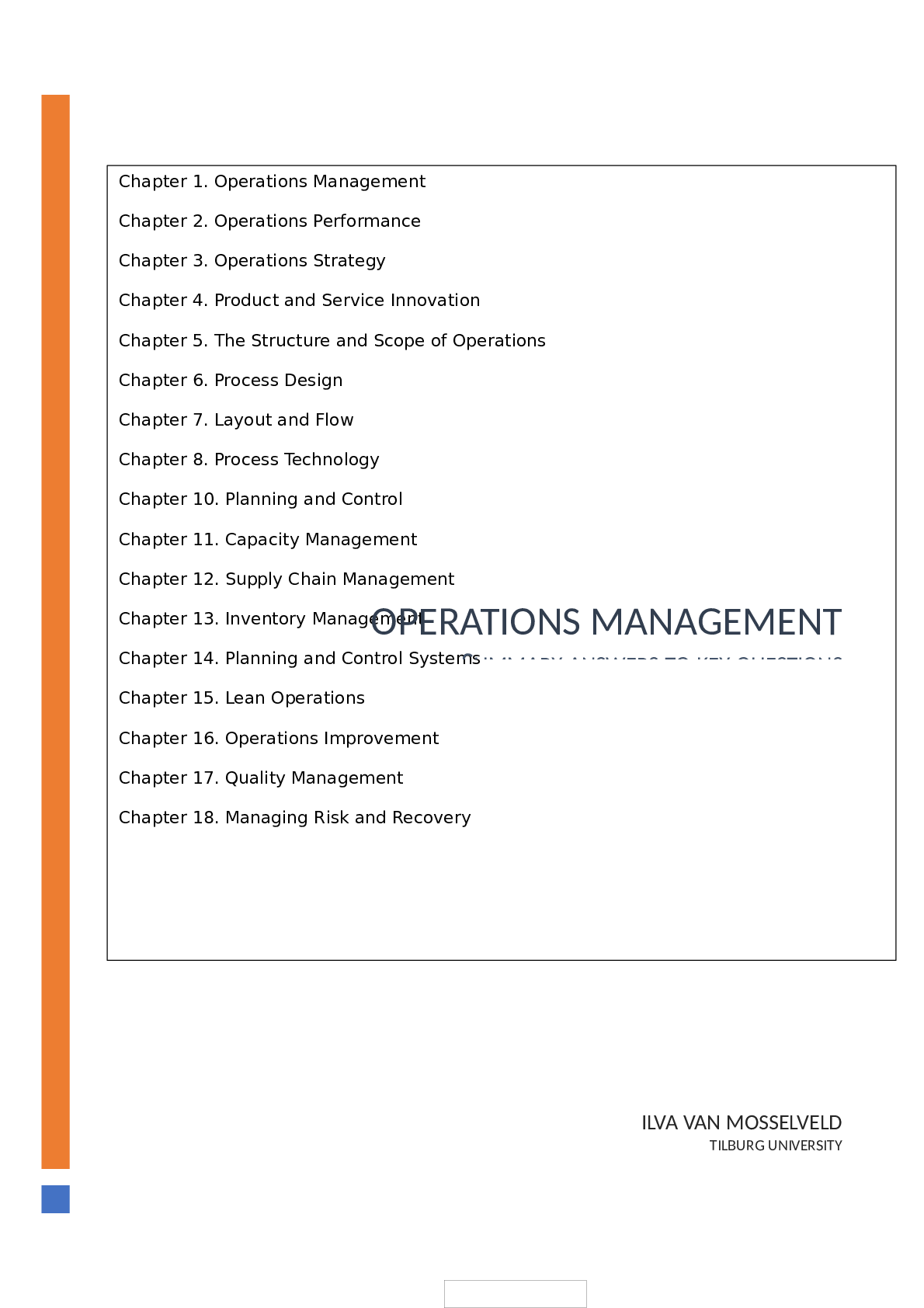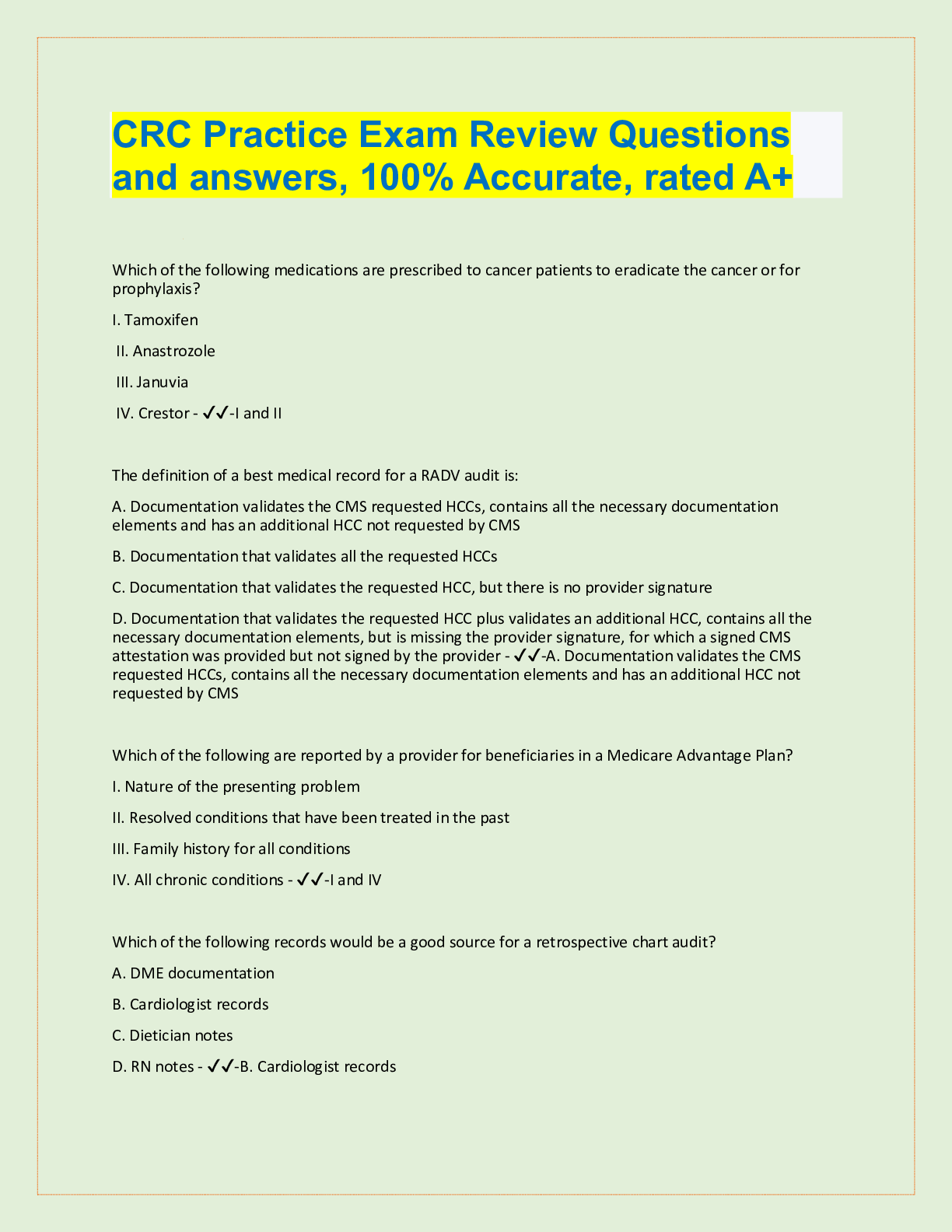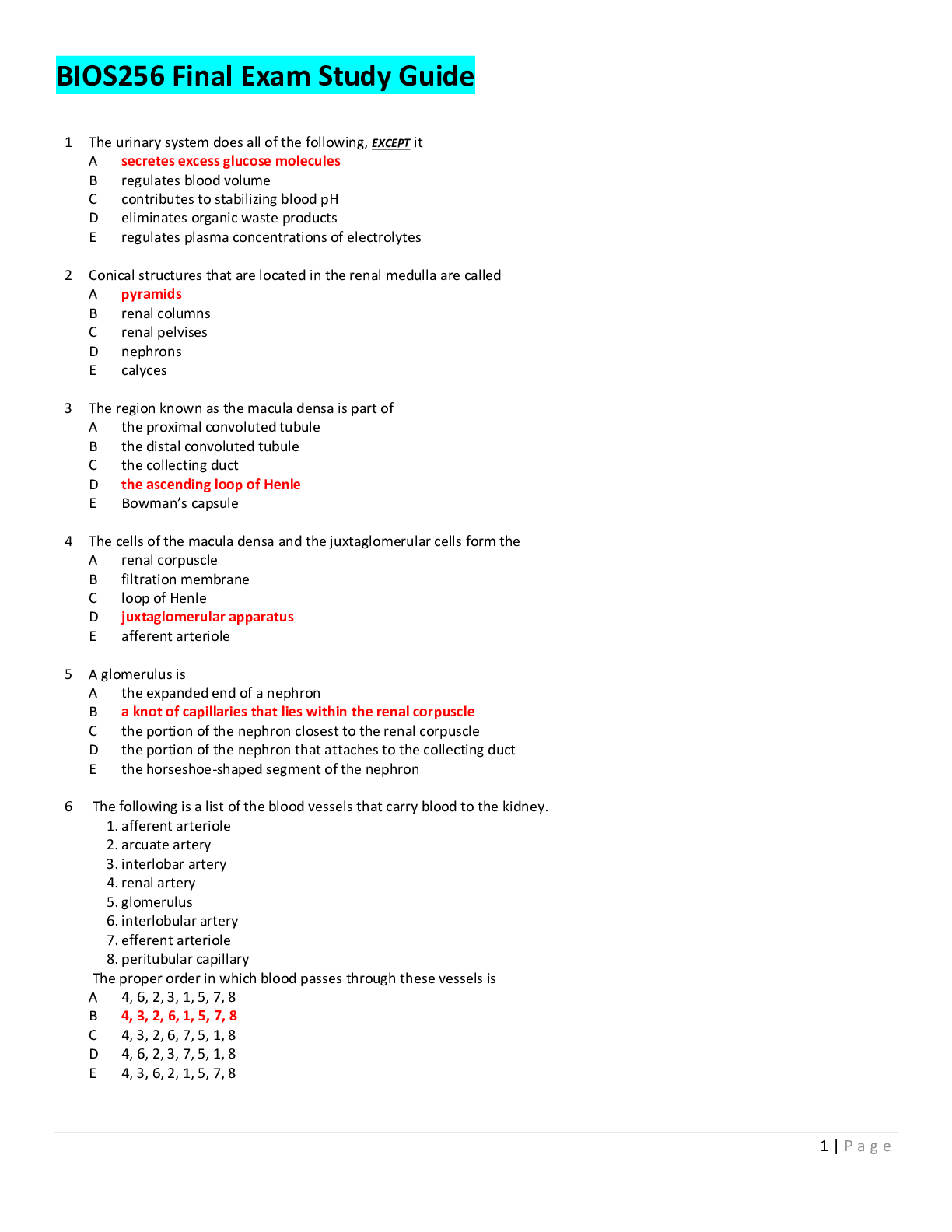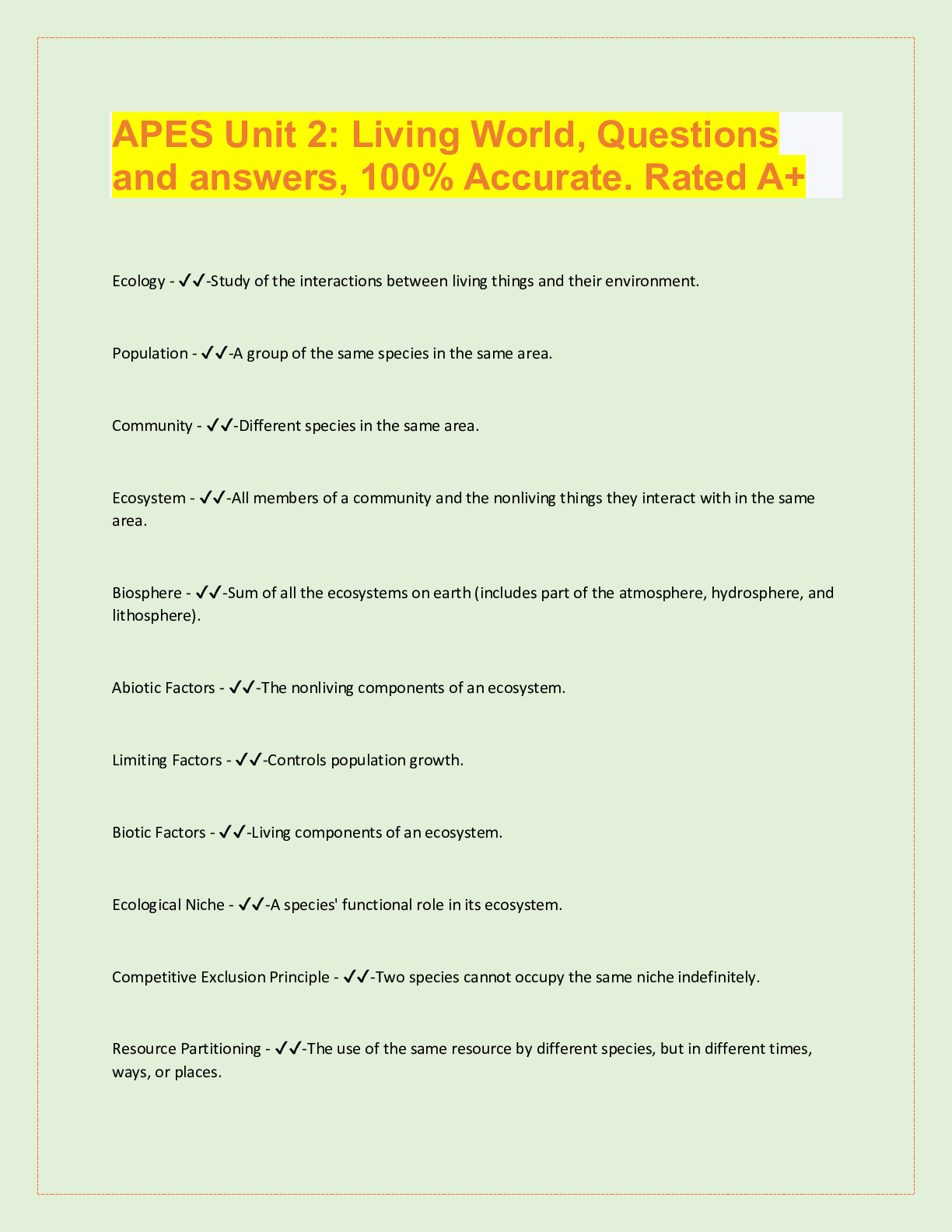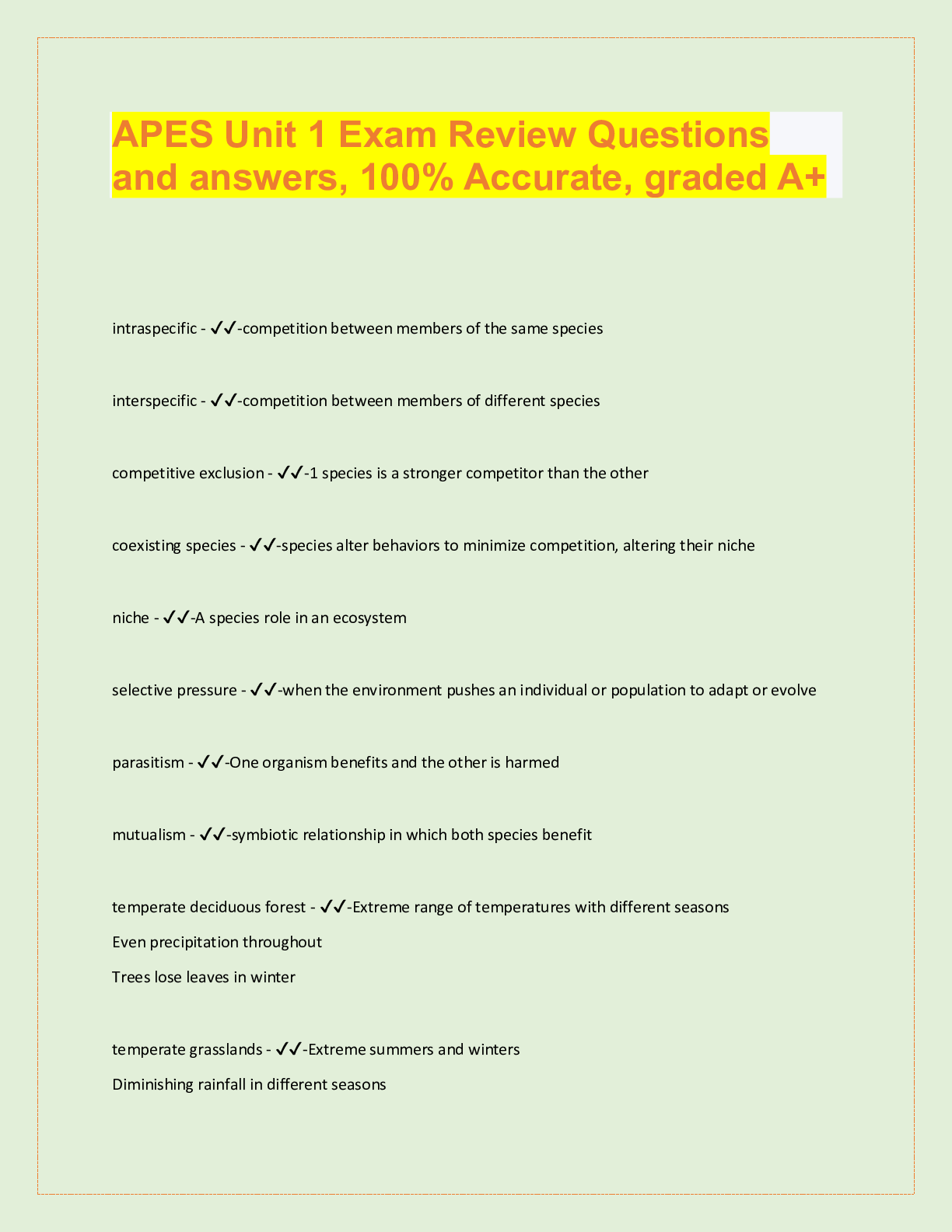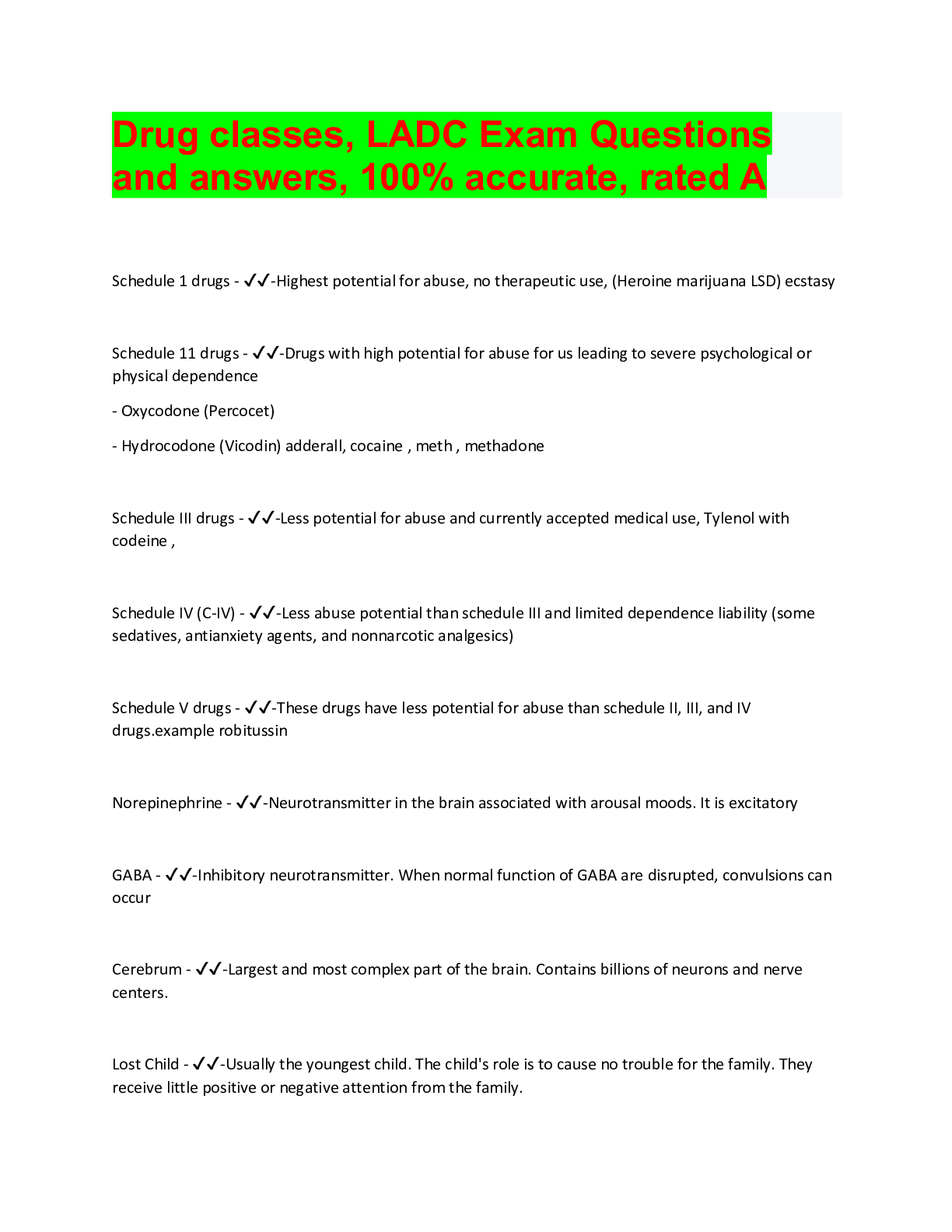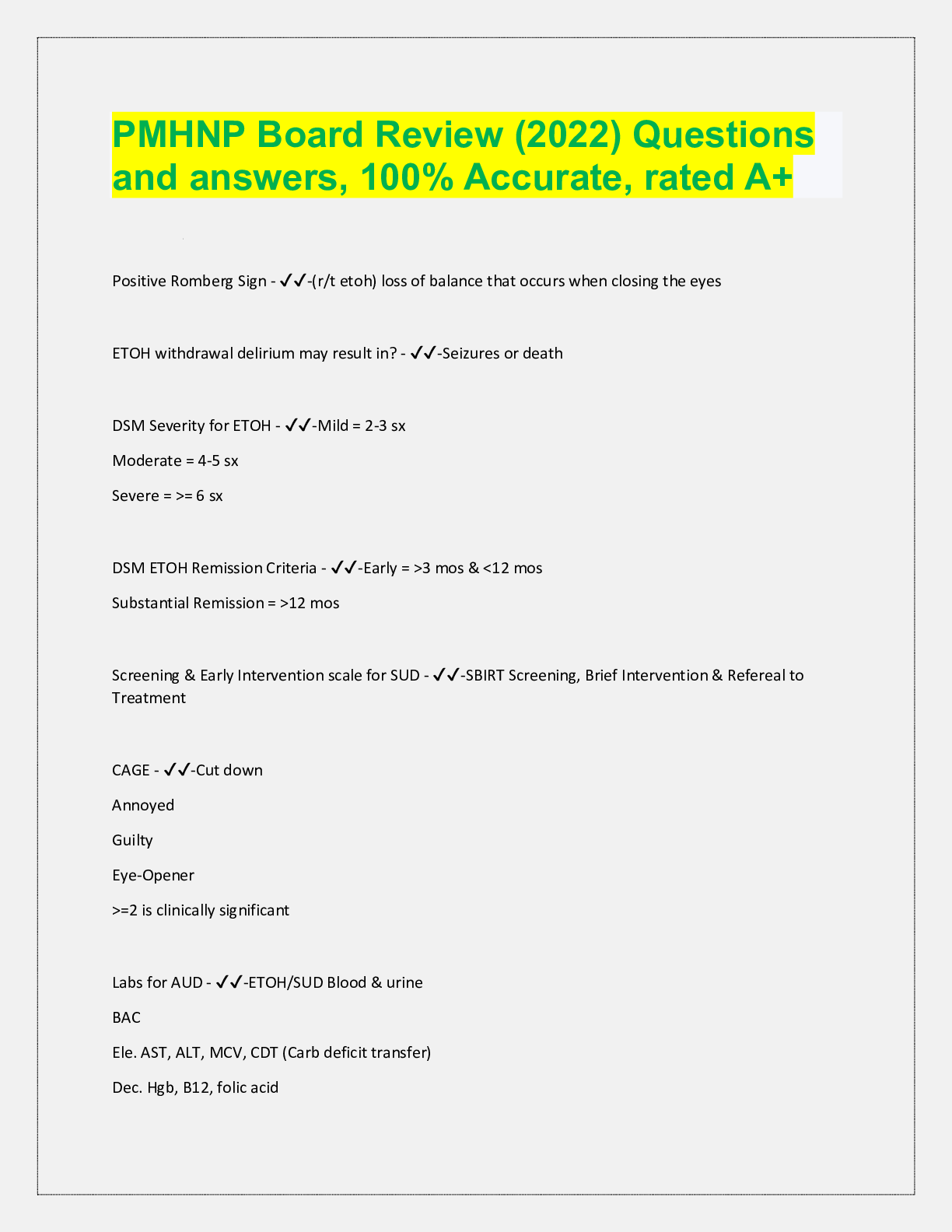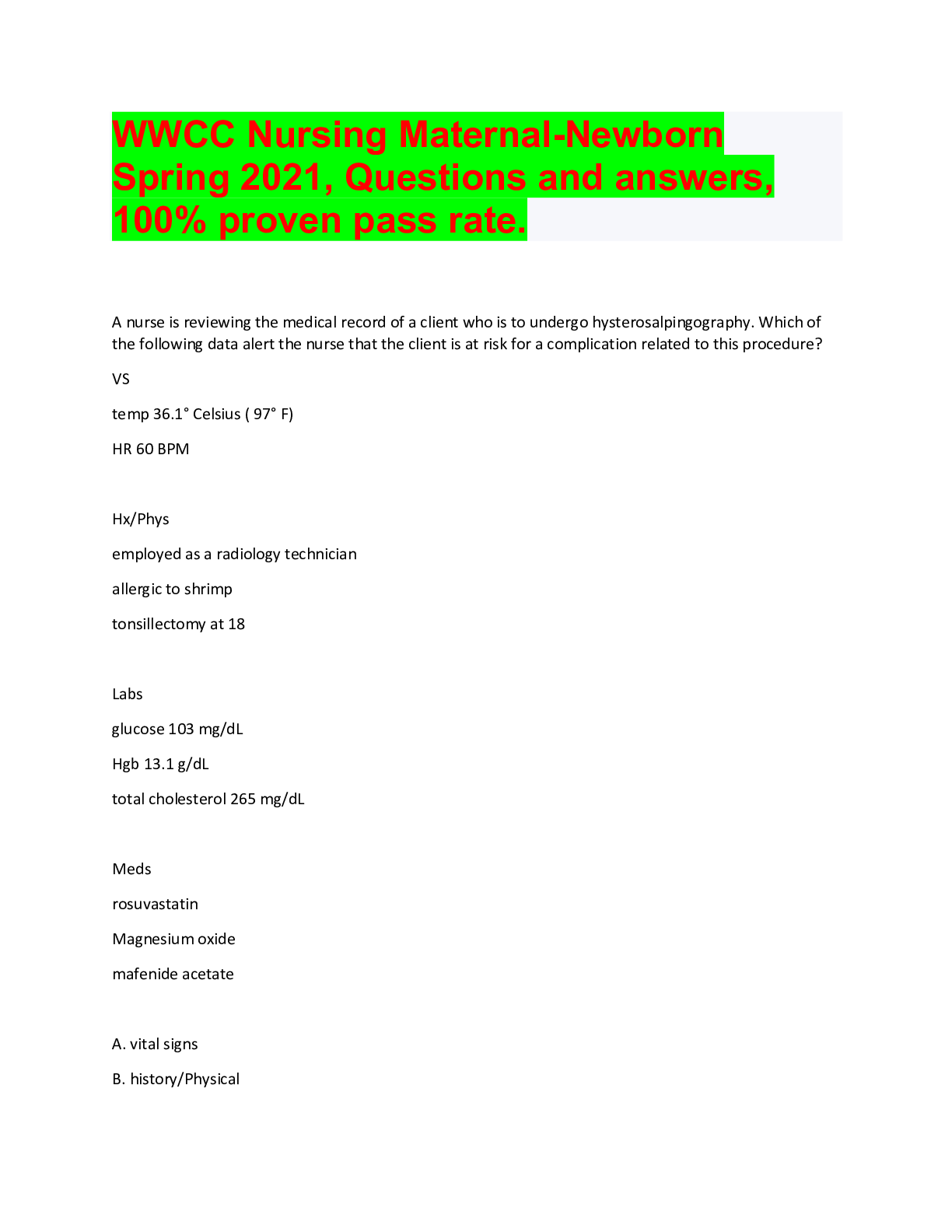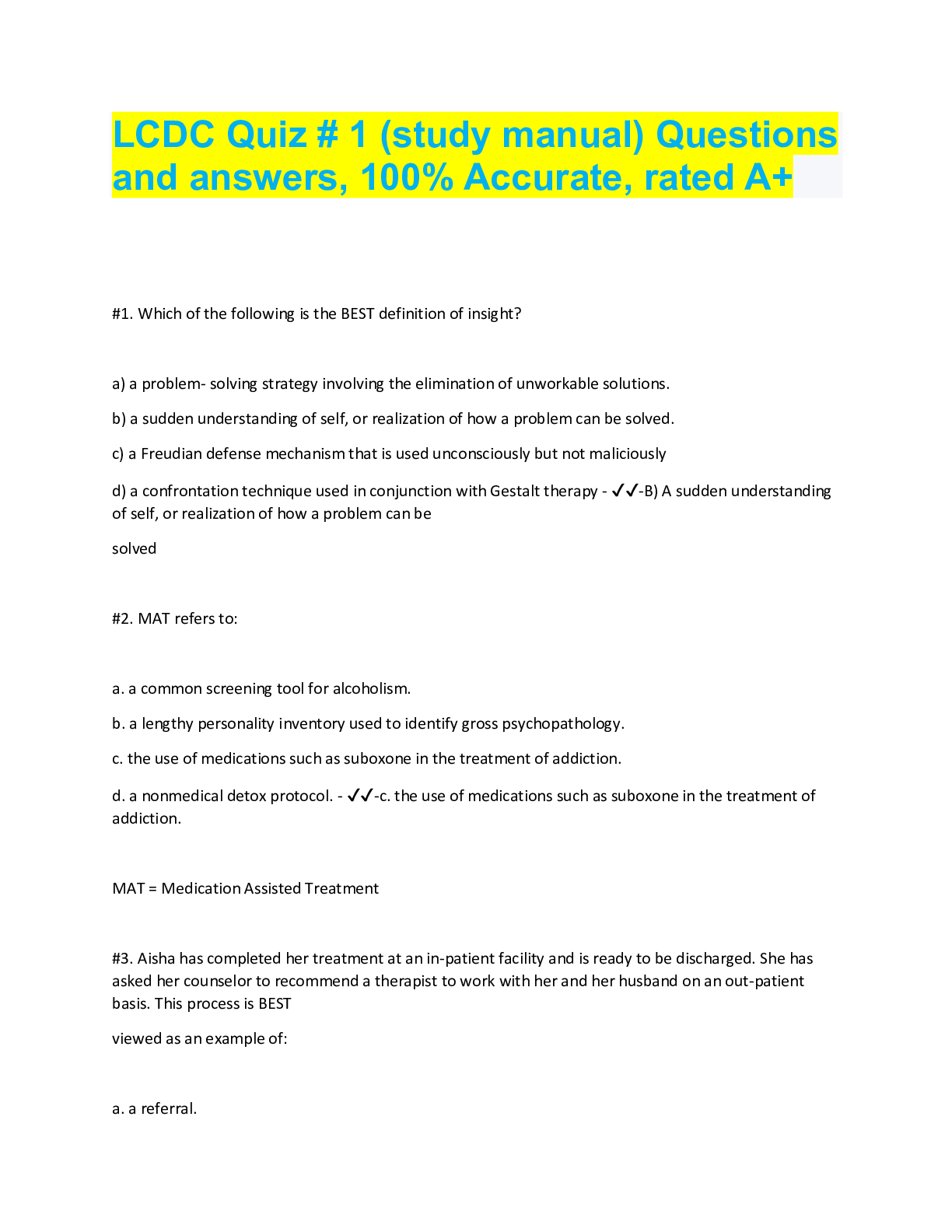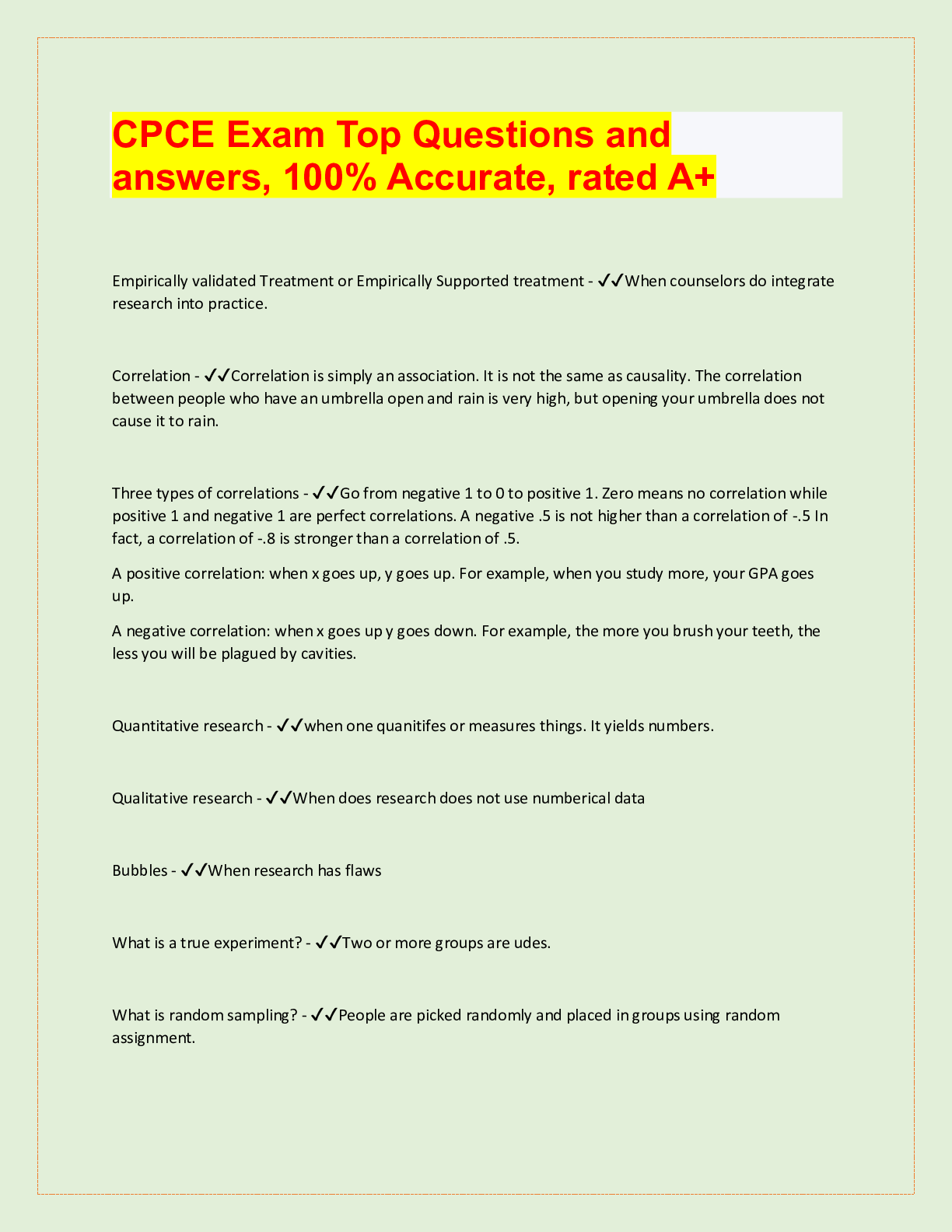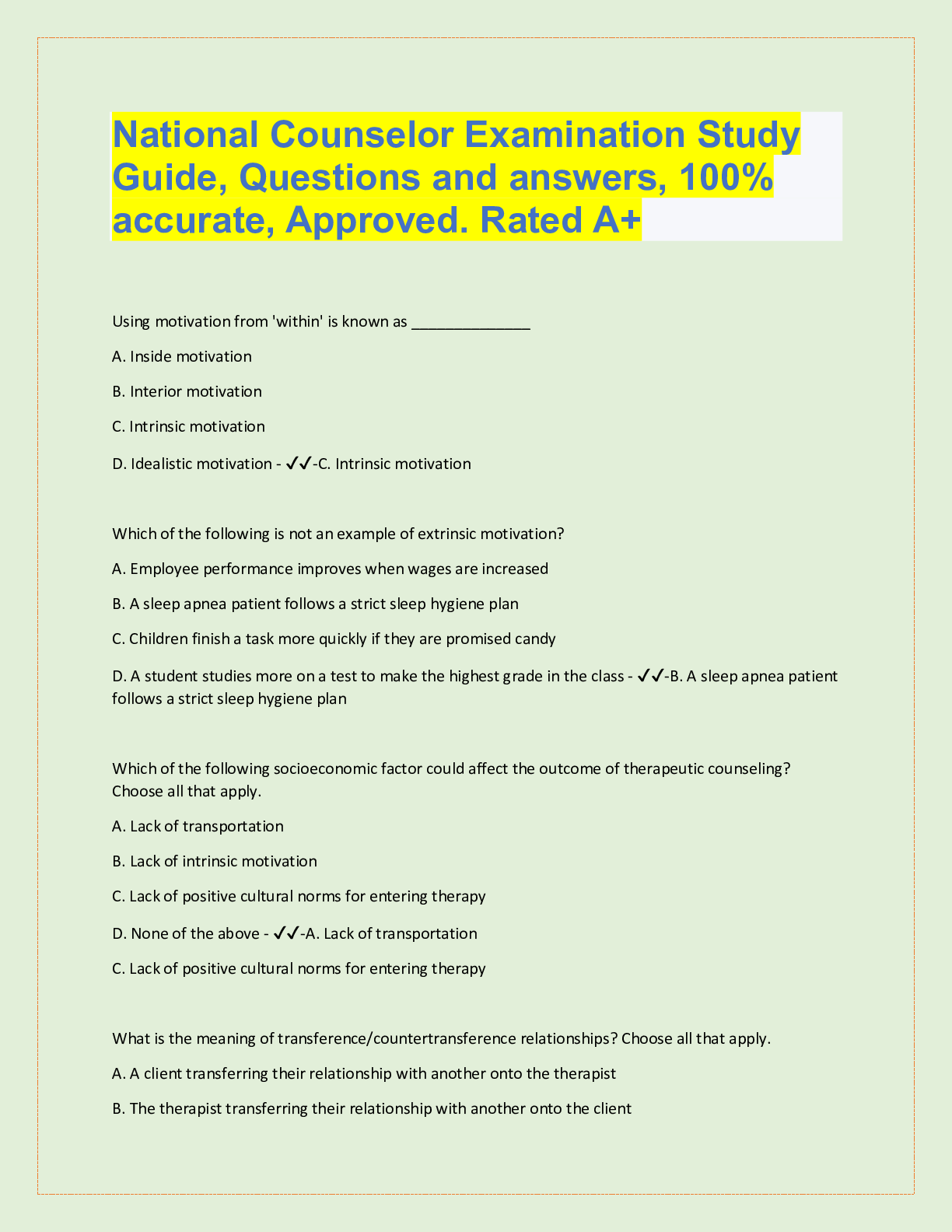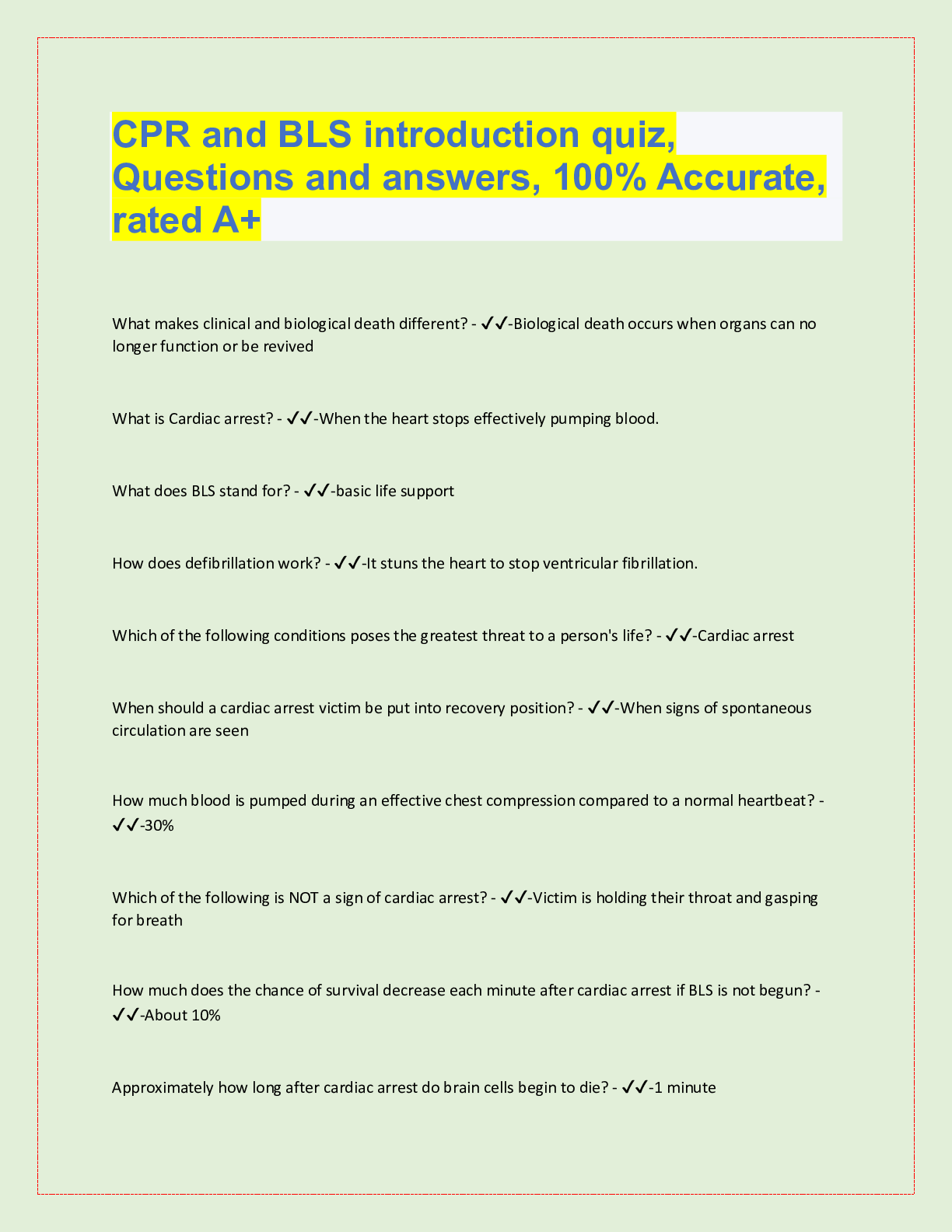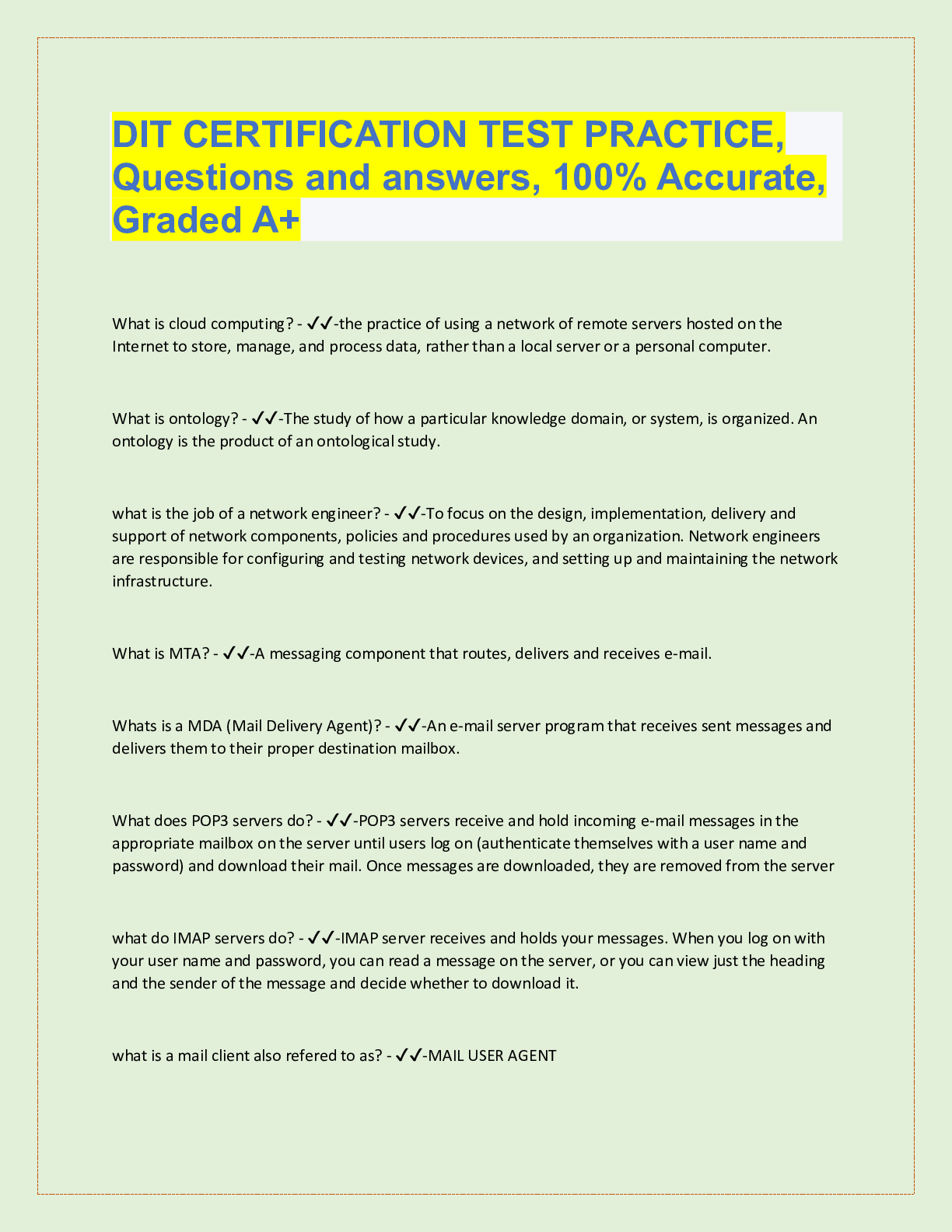Computer Science > QUESTIONS & ANSWERS > ICTWEB411 QUESTIONS AND ANSWERS, 100% SCORE (All)
ICTWEB411 QUESTIONS AND ANSWERS, 100% SCORE
Document Content and Description Below
Question 1: Explain with an example "open platform programming" in your own 50-100 words. A system or a platform where data can be accessed by user through open licences is an open platform programmi... ng. For example, wecan get a forecast from the National Weather Service by going to Weather.Gov. But the NWS also offers ‘a web service,’ otherwise known as an ‘Application Programming Interface’, or API. An API enables the data in one information system to be automatically accessible by other information systems. The NWS API enables developers to build applications that connect to the Weather.gov ‘platform’ in order to seamlessly provide public weather data to skiers, photographers, rainbow chasers, etc. Question 2: Outline what all three (3) open platform programming principles dictate? An open platform enables its data to be both accessed directly by users and also published in open formats ● An open platform is powered by technology that is freely available through open licenses ● An open platform is a system in which interoperability and integration are the primary design objectives Question 3: What are the main differences between a client-side scripting and server-side scripting? (150-200 words)Server-side scripting is used at the backend, where the source code is not viewable or hidden at the client side (browser). On the other hand, client-side scripting is used at the front end which users can see from the browser. 1. When a server-side script is processed it communicates to the server. As against, client-side scripting does not need any server interaction. 2. The client-side scripting language involves languages such as HTML, CSS and JavaScript. In contrast, programming languages such as PHP, ASP.net, Ruby, ColdFusion, Python, C#, Java, C++, etc. 3. Server-side scripting is useful in customizing the web pages and implement the dynamic changes in the websites. Conversely, the client-side script can effectively minimize the load to the server. 4. Server-side scripting is more secure than client-side scripting as the server side scripts are usually hidden from the client end, while a client-side script is visible to the users. Question 4: Summarise in 50-100 words the explanation of each of the following concepts and their application/ sequence of events: 4.1. Events and event handlers 4.2. Internet operations related to client computer and web server when a webpage consisting only of HTML tags is requested and displayed by a browser 4.3. Internet protocols 4.4. Standard generalised markup language (SGML) 4.5. Associated standards1. In programming, an event is an action that occurs as a result of the user or another source, such as a mouse being clicked, or a key being pressed. An event handler is a routine that is used to deal with the event, allowing a programmer to write code that will be executed when the event occurs. Or, A function or method containing program statements that are executed in response to an event. An event handler typically is a software routine that processes actions such as keystrokes and mouse movements. With Web sites, event handlers make Web content dynamic. JavaScript is a common method of scripting event handlers for Web content. 2. 3. Internet Protocol (IP) is the principal set (or communications protocol) of digital message formats and rules for exchanging messages between computers across a single network or a series of interconnected networks, using the Internet Protocol Suite (often referred to as TCP/IP). Messages are exchanged as datagrams, also known as data packets or just packets. The main purpose and task of IP is the delivery of datagrams from the source host (source computer) to the destination host (receiving computer) based on their addresses. 4. Standard generalized markup language (SGML) is a text markup language that serves as a superset of widely used markup languages like HTML (hypertext markup language) and XML (extensible markup language). SGML is used for marking up documents and has the advantage of not being dependent on a specific application. It is derived from GML (generalized markup language), which allowed users to work on standardized formatting styles for electronic documents. 5. The International Organization for Standardization or ISO is an international non governmental organization made up of national standards bodies; it develops and publishes a wide range of standards. Standardization affects units of measurement; alphabetization and transliteration; specifications for parts, materials, surfaces, processes, tools, methods of testing, and machines; and even the form in which specifications are presented. ISO standards cover a variety of sectors, ranging from [Show More]
Last updated: 1 year ago
Preview 1 out of 15 pages
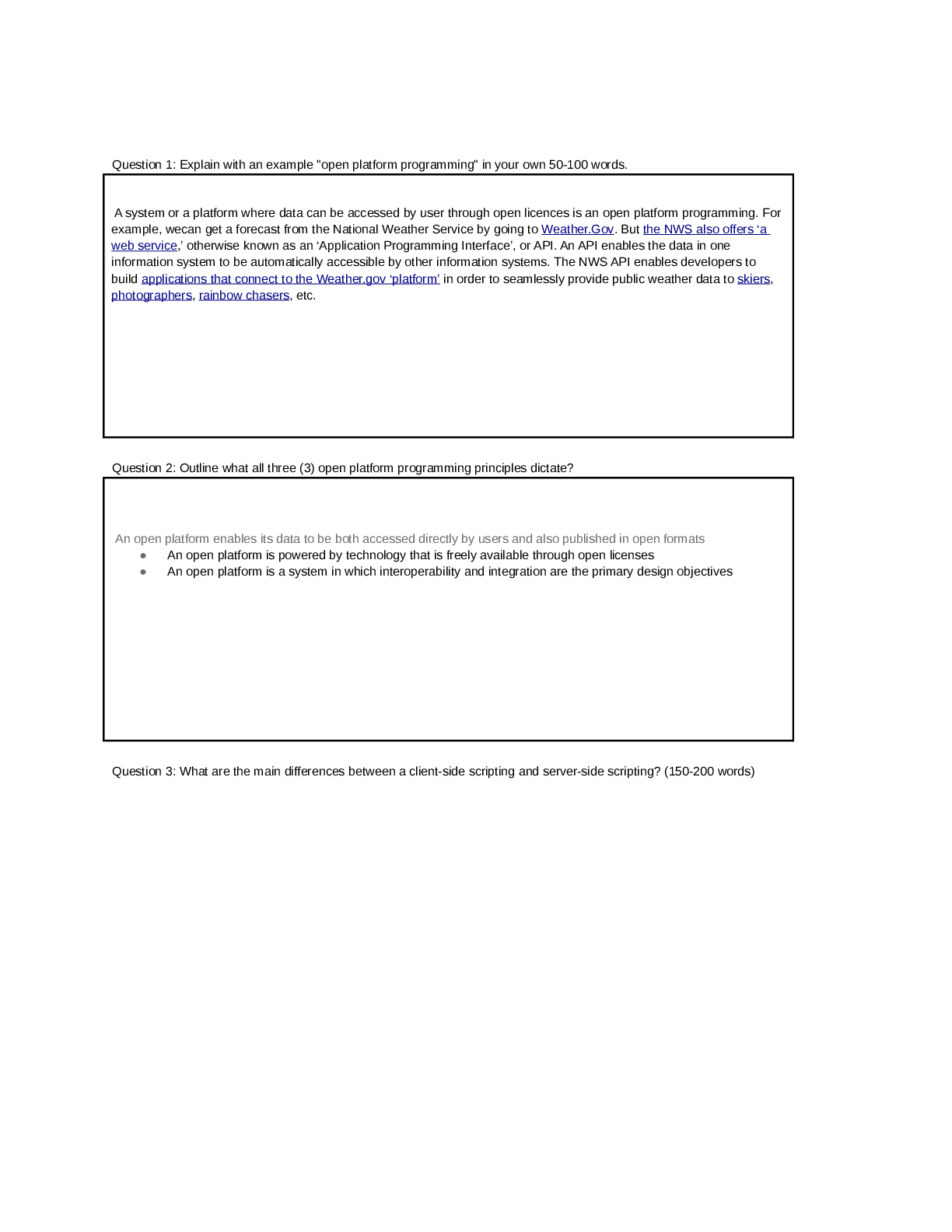
Reviews( 0 )
Document information
Connected school, study & course
About the document
Uploaded On
May 15, 2021
Number of pages
15
Written in
Additional information
This document has been written for:
Uploaded
May 15, 2021
Downloads
0
Views
104



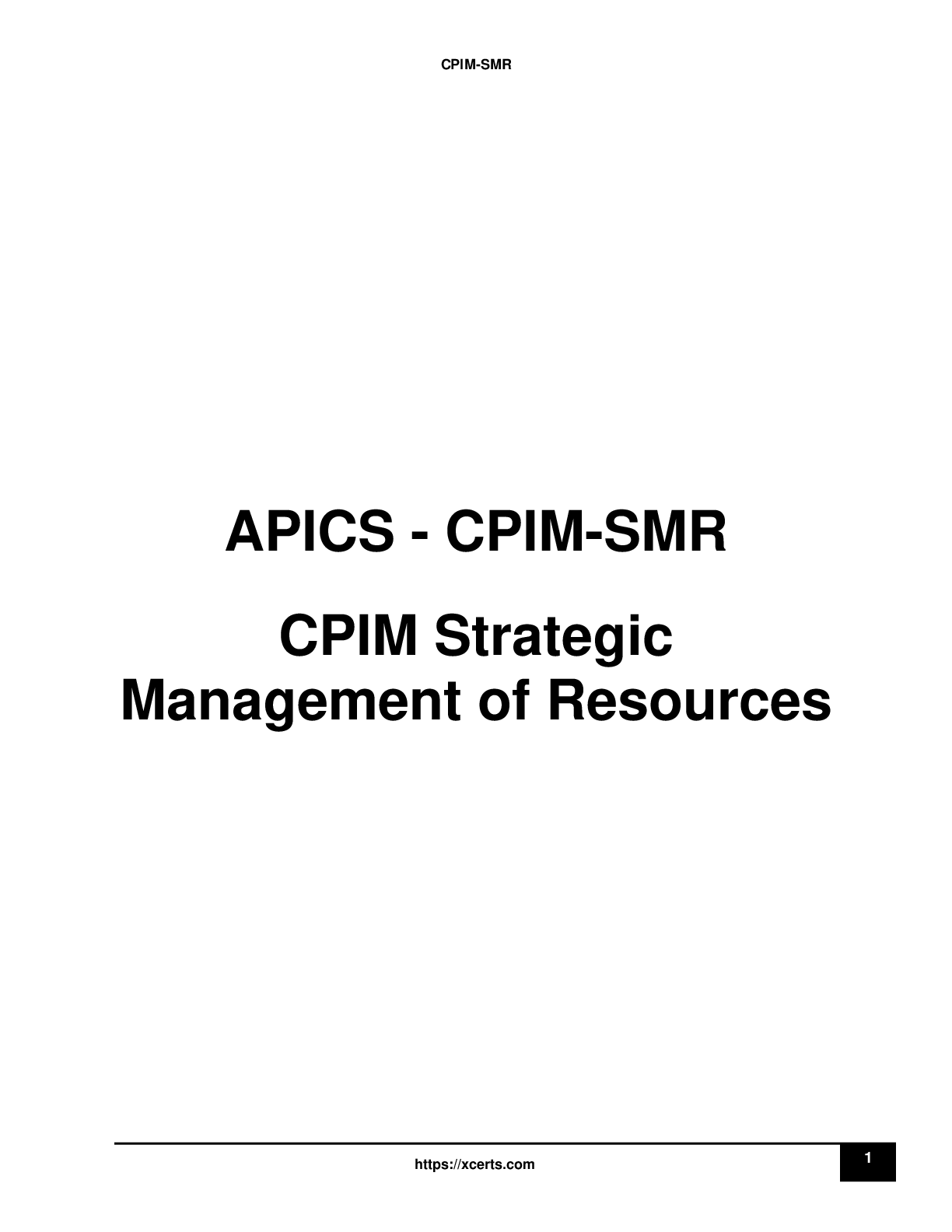


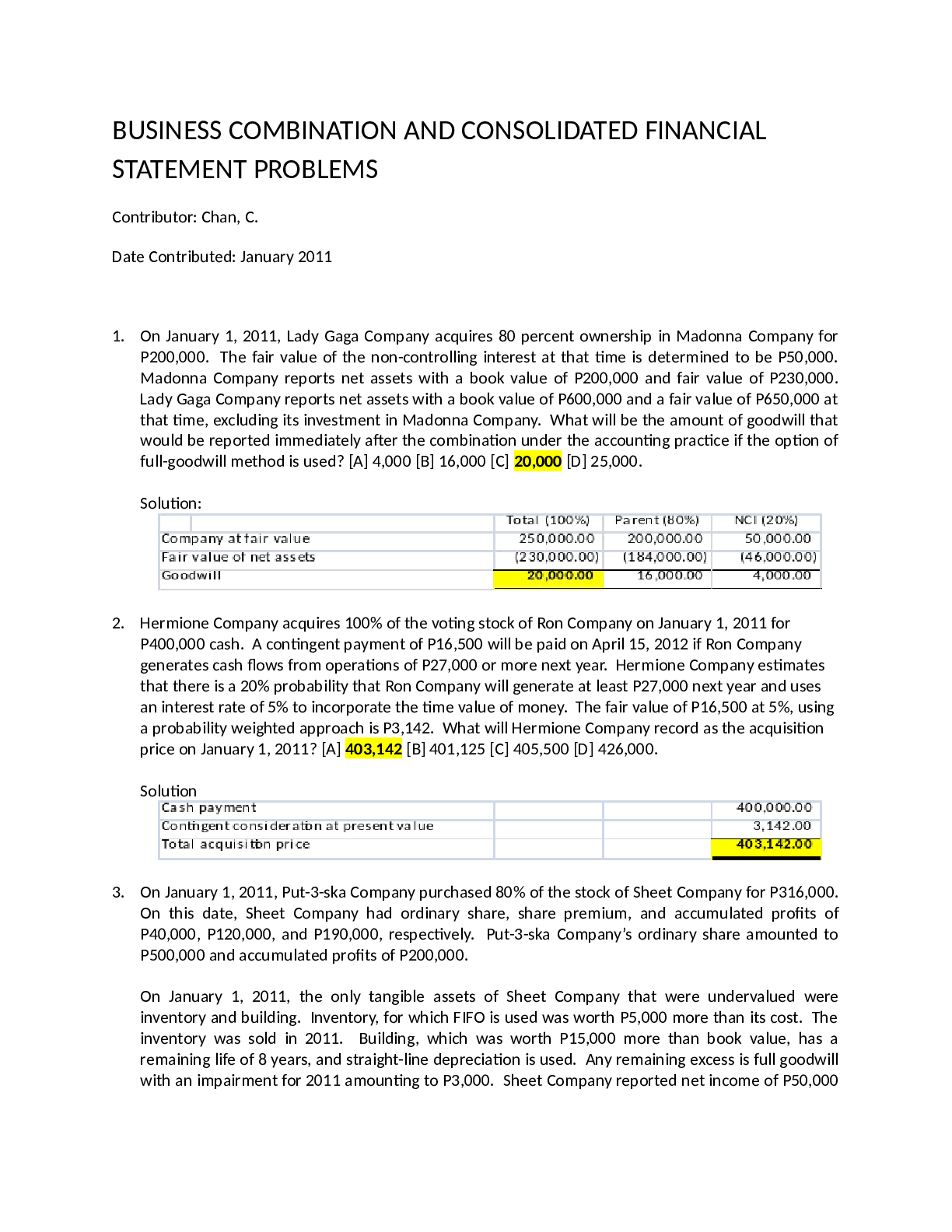
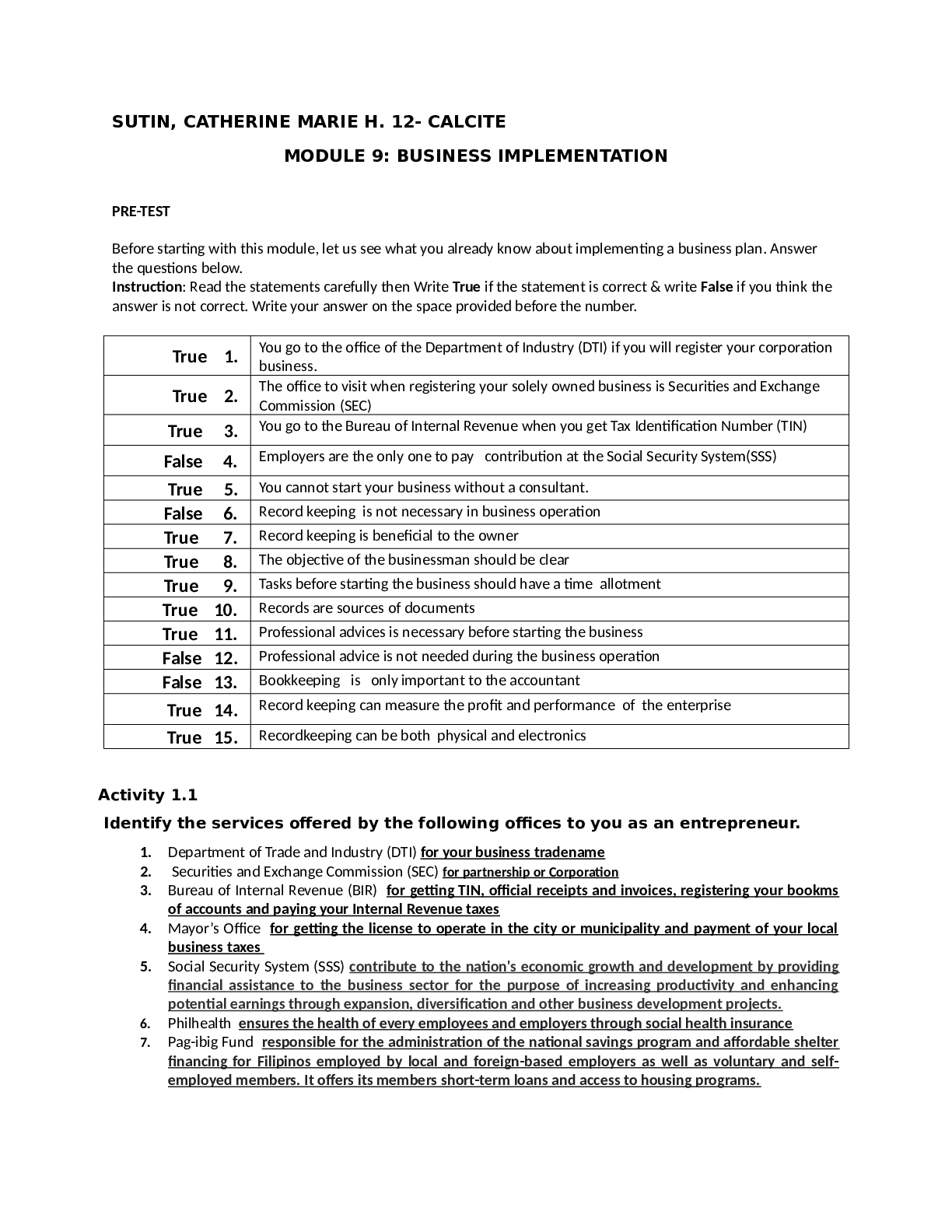
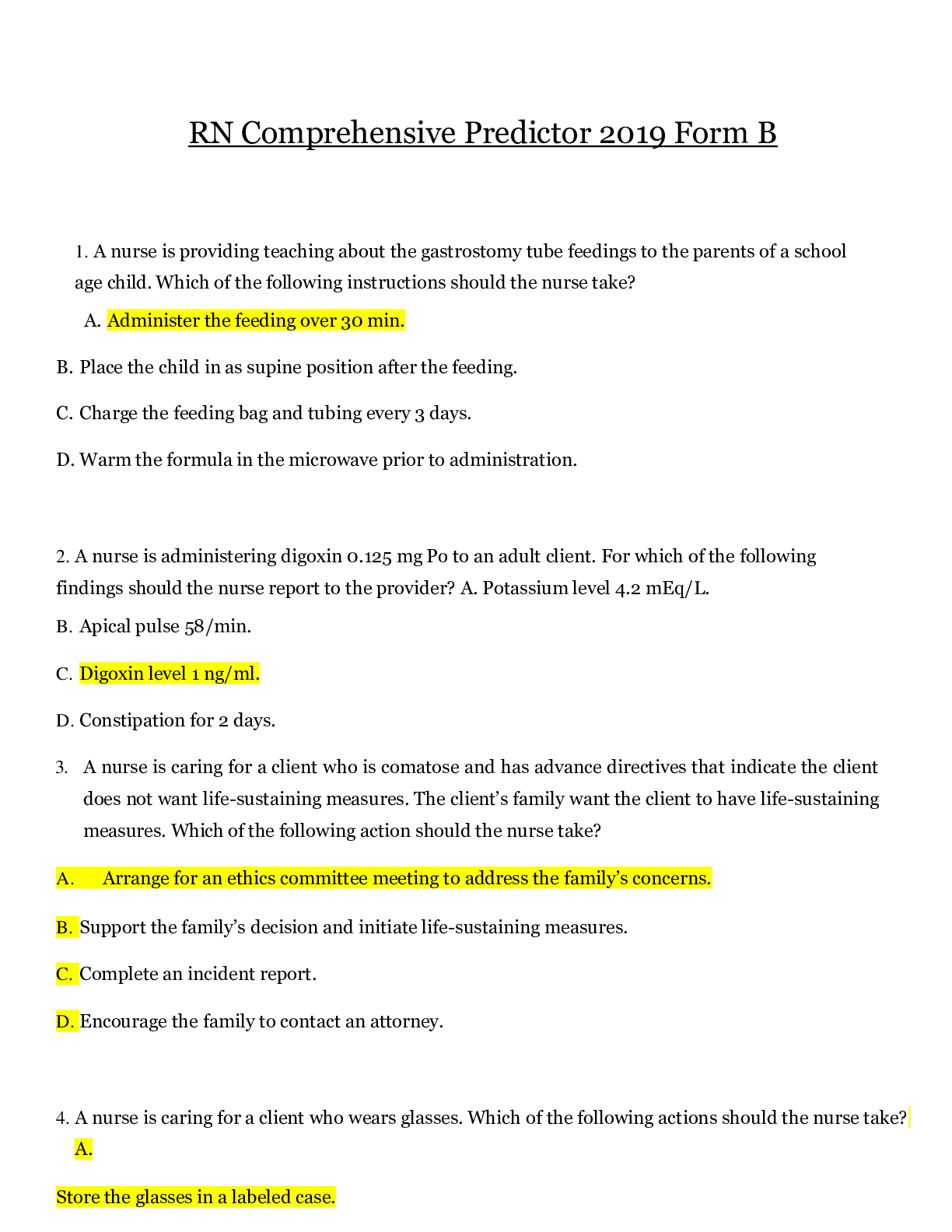
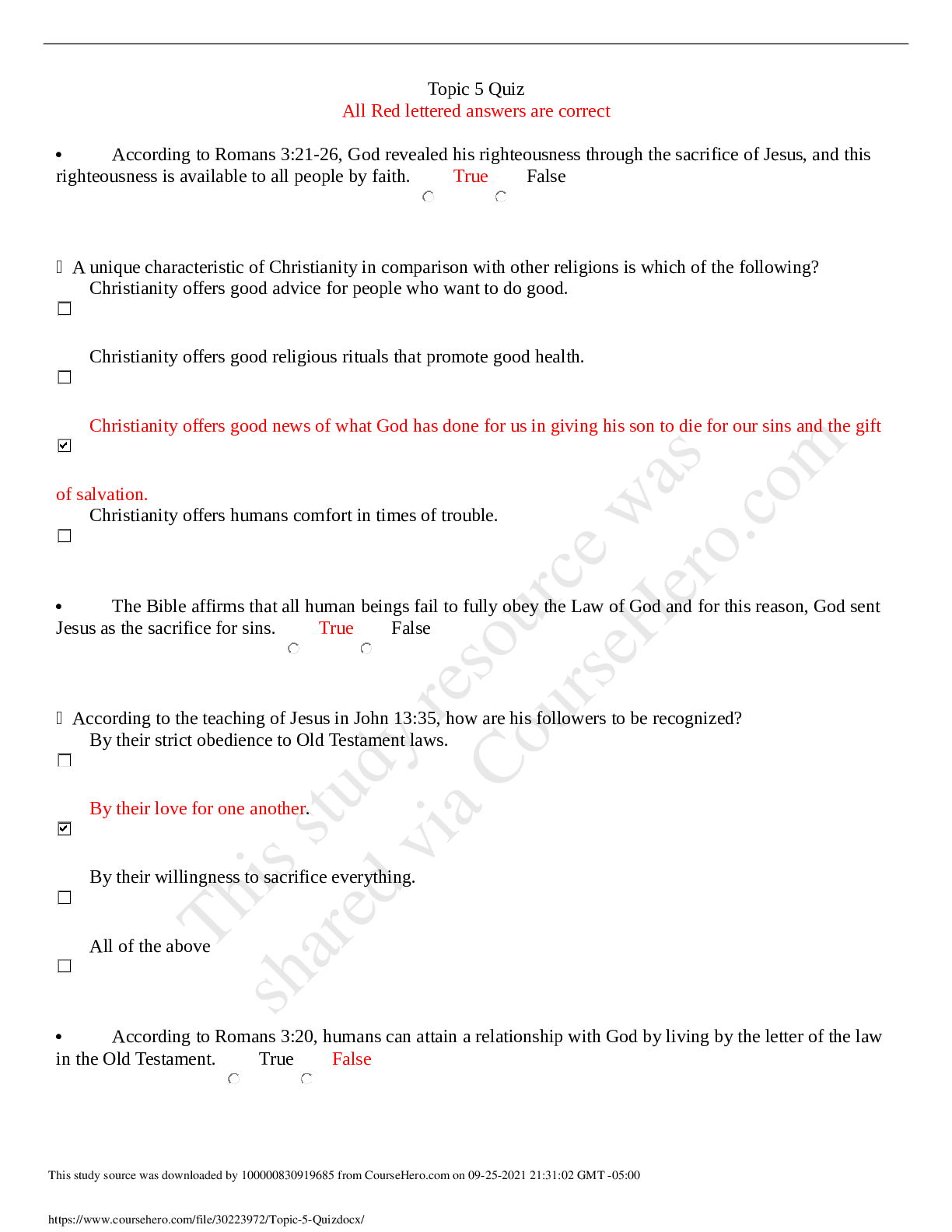
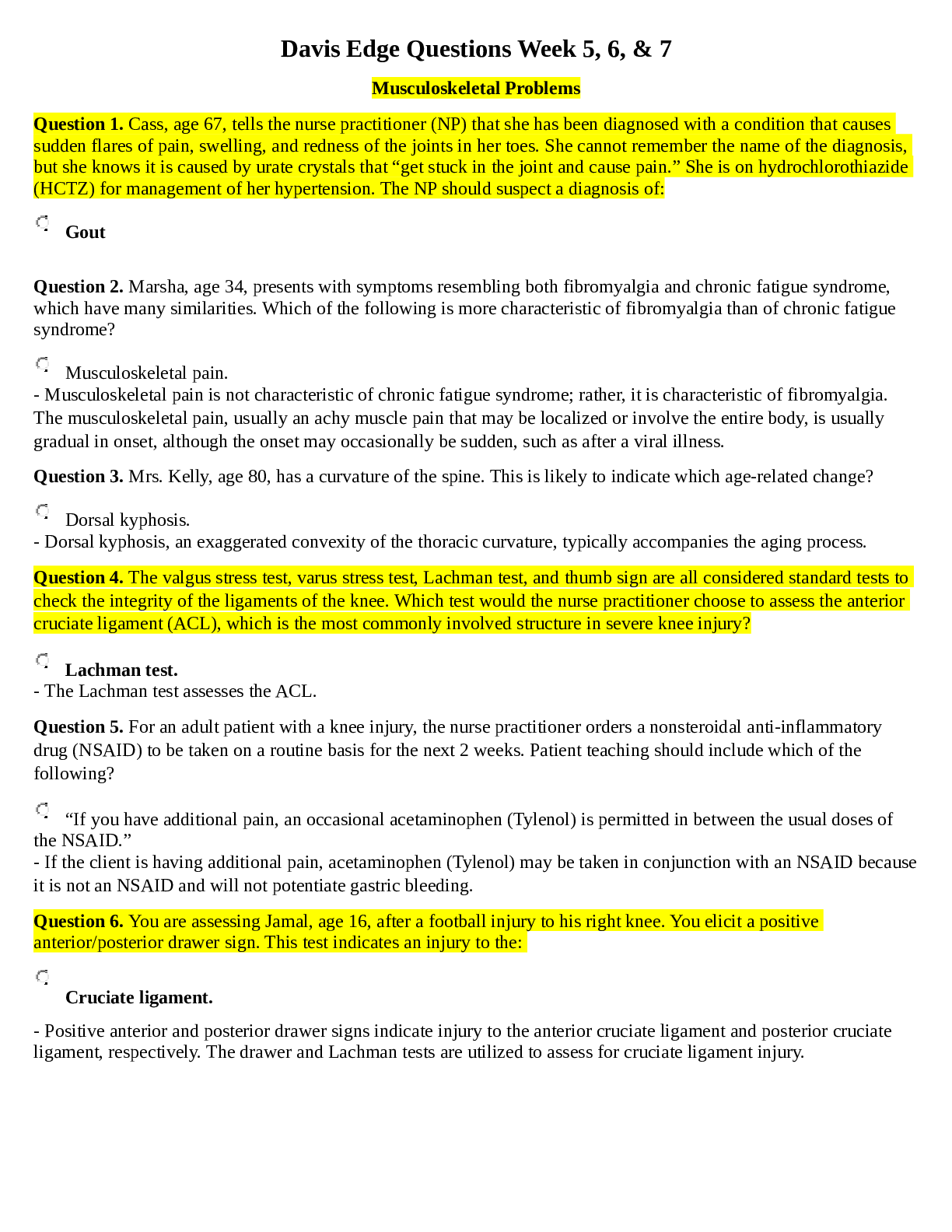
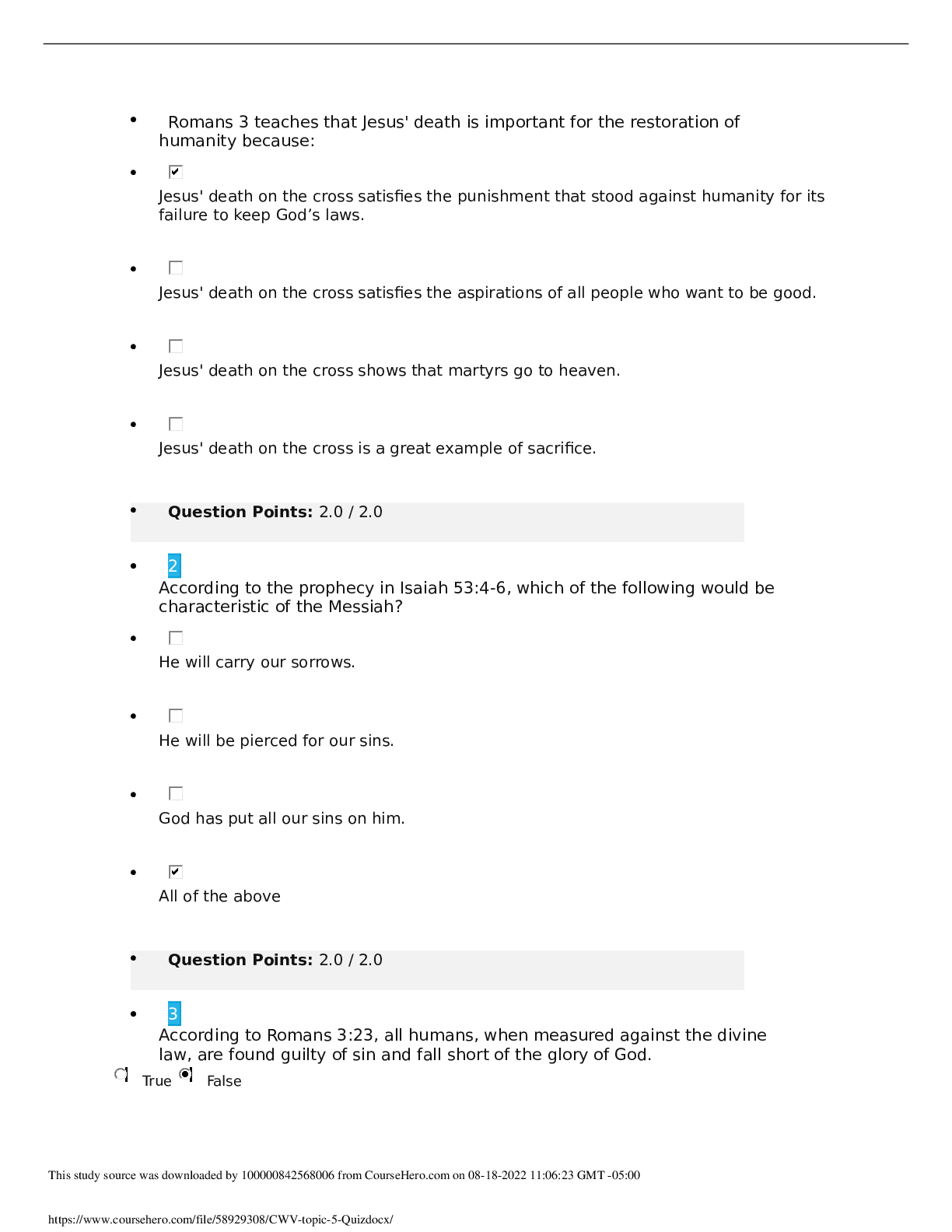
.png)

